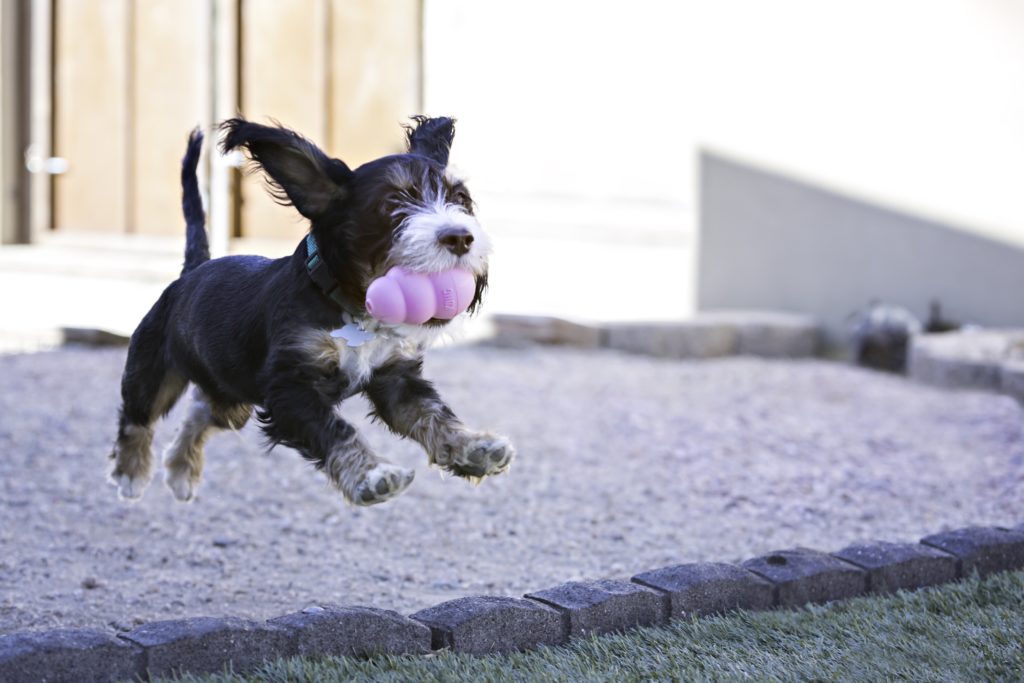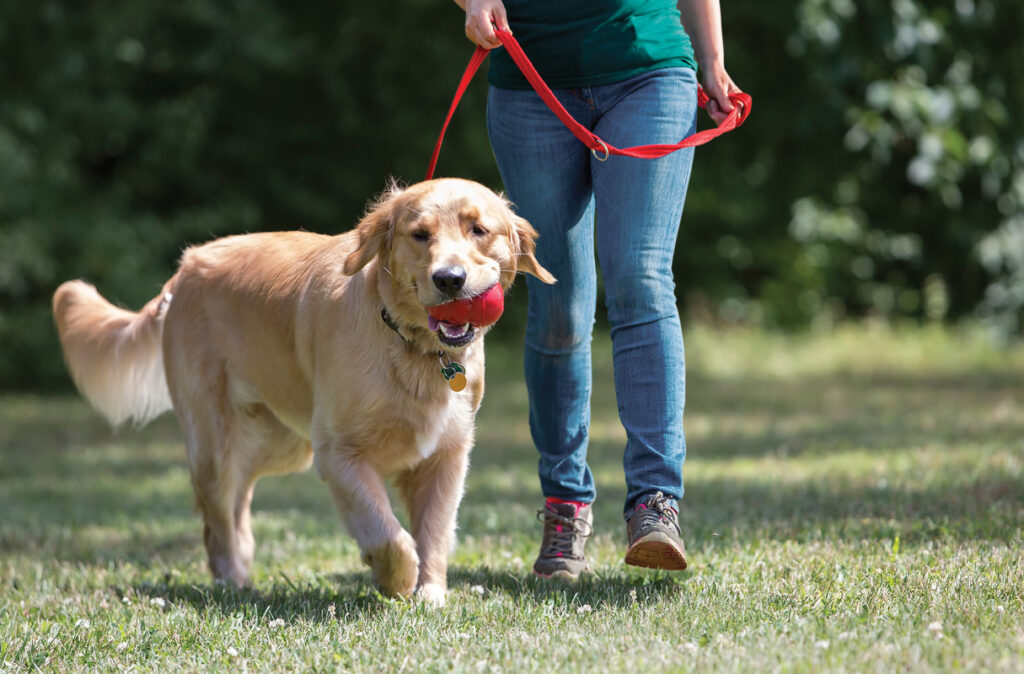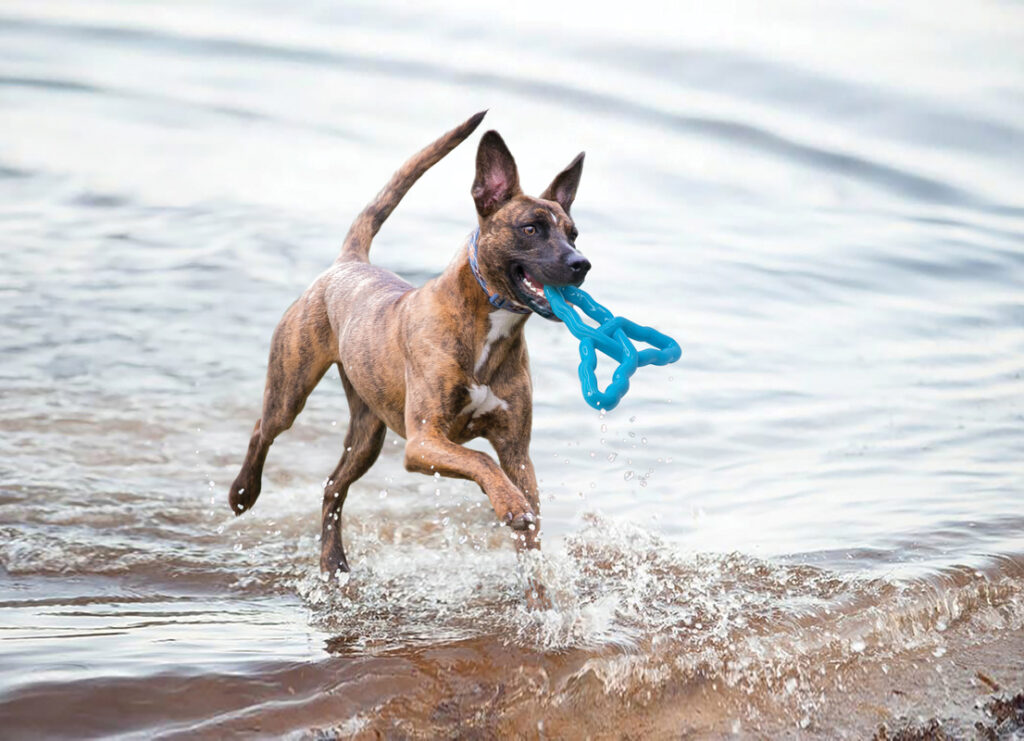“Wow! What a beautiful puppy! Oh, he’s going to be a big boy! Just look at the size of those paws!” If you’ve recently brought a puppy home, congratulations! Secondly, if you didn’t get a look at its parents because they weren’t available or you adopted a rescue, then you may be wondering just what to expect in terms of its growth and ultimate size. It’s a reasonable and common question to encounter, and there are a lot of old legends and assumptions out there about how you should be able to tell how big your puppy will grow, based on things like what were just mentioned. Some of them contain a bit of truth, while others… well… they really don’t have much of anything to do with anything.
So let us provide you with a few tips on how to determine things like a healthy dog weight and other management approaches for your new family member. First, though, we’d like to offer some potentially relevant variables that are used to compile in a dog weight chart.
Your Dog’s Breed Influences Its Weight
You don’t need us to tell you that a Labrador Retriever is going to be bigger than a Yorkie. Obviously, the type of breed is going to be one of the biggest determining factors when it comes to your dog’s ultimate weight. Even if you have a dog that’s a mixed breed, you can still generally figure out what to expect based on the breeds involved. If you have a German Shepherd-Burmese Mountain Dog mix, you’re going to have a big boy or girl. It can get tricky, though, if you adopt a rescue and you’re unsure of its breed or background. In that case, you can always visit your veterinarian and get a test done to determine its breed or breeds.
Your Dog’s Gender Influences Its Weight
Generally speaking, females are going to be smaller than males, regardless of breeds. Dogs definitely fall into the category of sexual dimorphism. What does that mean? It means that within the canine species, there are more differences between males and females than just their sexual organs. One of those differences is their average size. Depending on breed, females will usually grow to be a few to several pounds smaller than their male counterparts. However, that’s not an absolute, even though it is something you’ll often see figured into a dog weight chart.
Your Dog’s Early Diet Influences Its Weight
Babies need milk. We know this to be true with almost any species of animal, including humans. Newborns in nature are nourished by their mothers, and dogs need the same type of nourishment after entering the world. Therefore, how much mother’s milk a puppy gets or for how long is going to help determine that dog’s ultimate size. Unless you were around for the birth of your puppy, it may not be possible to know how much milk we’re talking about, but even diet during the early part of a dog’s life after weaning is going to have an effect on its ultimate size. Putting weight on a dog during puppyhood should come naturally if it’s being fed properly. Make sure you work with your veterinarian to provide your pup with the nutrients it needs to grow in a healthy manner.
The Environment Influences Your Dog’s Weight
Not everything that goes into a dog weight calculator, or that ultimately determines the size of your dog, is genetic in nature. We’ve seen that above with regards to its environment, but in addition to what the dog consumes, how it lives early in life is also going to play a role in how big it gets. As is the case with humans, particularly young humans, puppies need a lot of exercise on a daily basis. They are curious, they are filled with exuberance and they need to blow off steam. However, they should not get too much exercise, as that can actually damage their skeletal structure. Instead, the proper amount of exercise will add to bone density and the development of muscle mass to support those bones. Play with your puppy around the house or yard for as long as it wants to and take it on walks, but let it decide when the physical activity is over and the snuggling begins.
The Myths About Puppy Weight
One of the things that needs to be accounted for when trying to figure out your pup’s future weight/size is that there are common myths out there with regards to how big your dog is going to get in adulthood. We mentioned one above relating to paw size. To be fair, yes, paw size can be an indicator of the ultimate size of your dog, but like humans, every dog grows differently. The day you see that puppy may just be during a time when its paws are growing faster than other parts of its body. Paws also tend to grow first during a dog’s development.
Another common myth involves loose skin. All dogs will have loose skin at some point in their growth. It does mean that the dog is going to grow more, but it has almost nothing to do with how much more they’re going to grow. Therefore, you shouldn’t assume that your dog is going to grow a lot more even if you find that loose skin to be prevalent well into puppyhood. It may only take a handful of pounds to tighten that skin.
The Takeaway
With all that information shared, there are many factors that will determine how big your puppy grows up to be, but remember that a lot of this will depend on you. If you feed your dog properly, give it the right amount of mental stimulation, show it constant love and exercise it in healthy amounts, it’s going to grow into whatever size it was meant to be.
If you’d like help during playtime and with your new dog’s exercise regimen, consider joining KONG Club. KONG Club has great solutions for every stage of development and situations to keep your dogs happy, healthy, and tired. We wish you the best of luck with your new friend!



